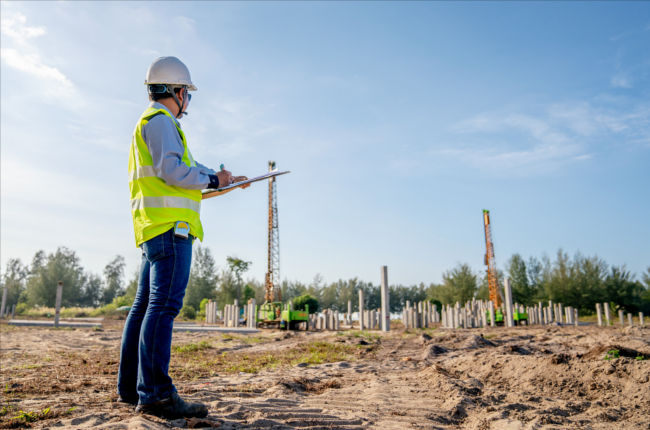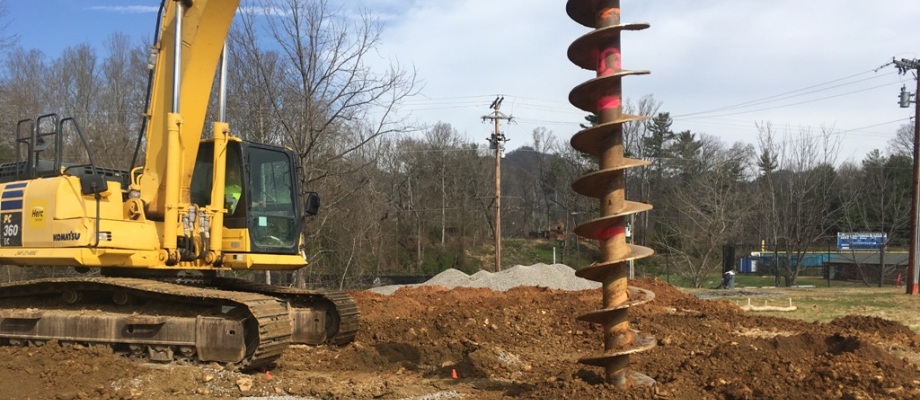Vital Skills for Flourishing in the Geotechnical Industry Today
Vital Skills for Flourishing in the Geotechnical Industry Today
Blog Article
A Thorough Review of the Trick Obligations of Geotechnical Engineers in Site Characterization and Ground Renovation Strategies for Design Solutions
Geotechnical designers are important to the effective implementation of design jobs, tasked with the important duties of website characterization and the application of ground improvement techniques. Their work involves a detailed evaluation of subsurface conditions, using numerous screening approaches to recognize dirt and rock residential properties.
Role of Geotechnical Engineers
Geotechnical engineers play an essential role in the style and building of infrastructure by examining the actions of soil and rock underneath the surface area - civil consulting engineers. Their obligations incorporate reviewing subsurface problems to educate style decisions that ensure architectural stability and safety. By conducting in-depth evaluations of soil buildings, including shear compressibility, stamina, and leaks in the structure, geotechnical designers provide important information that affects the option of proper construction products and techniques
In enhancement to analyzing soil auto mechanics, geotechnical engineers are charged with determining potential threats such as landslides, sinkholes, and ground negotiations. Their proficiency assists reduce threats related to these geotechnical phenomena, thus safeguarding both the environment and public security. They additionally collaborate carefully with other design disciplines, making certain that geotechnical factors to consider are incorporated into overall job style.
Furthermore, geotechnical engineers participate in the examination of existing structures, giving referrals for retrofitting and repair work when essential. Their extensive understanding of soil-structure communication is necessary for the development of lasting infrastructure options. Generally, the duty of geotechnical engineers is integral to the effective realization of construction jobs, guaranteeing they are risk-free, sturdy, and compliant with regulatory criteria.

Site Characterization Processes
Efficient website characterization procedures are necessary for comprehending the subsurface problems that influence task style and execution. Geotechnical engineers employ a methodical strategy to gather, review, and analyze information relating to dirt, rock, and groundwater attributes. This process begins with a comprehensive testimonial of existing literary works and historical website information, supplying insights right into previous website problems and possible difficulties.

Information evaluation complies with fieldwork, where designers utilize geostatistical methods to translate searchings for and produce geological designs. Through thorough site characterization, geotechnical designers lay the foundation for effective project implementation, minimizing unforeseen complications and optimizing source allotment.
Dirt and Rock Testing Techniques
While understanding subsurface problems is crucial, the choice of ideal dirt and rock testing methods is similarly necessary for exact evaluation and style. Geotechnical engineers use a variety of testing techniques to assess the physical and mechanical buildings of soil and rock materials.
Lab examinations, such as Atterberg restrictions, grain size evaluation, and unconfined compressive toughness examinations, give necessary data on dirt habits under various moisture conditions and loading situations. These examinations assist identify dirt classification and forecast settlement or shear toughness attributes crucial for structure style.
In-situ testing approaches, including Requirement Infiltration Examinations (SPT), Cone Infiltration Examinations (CPT), and pressure meter examinations, allow designers to gather information straight from the ground. These methods use important understandings into the dirt's thickness, uniformity, and stratification without the need for comprehensive tasting.
Rock testing commonly includes core sampling and research laboratory evaluation to assess residential or commercial properties like uniaxial compressive toughness and rock quality classification (RQD) With each other, these dirt and rock testing approaches enable geotechnical designers to make educated decisions pertaining to site-specific challenges, ensuring the safety and security and security of design remedies.
Ground Renovation Techniques
Ground enhancement methods are crucial for boosting the engineering homes of dirt, thus enhancing its load-bearing ability and reducing settlement. These approaches are critical in resolving challenges provided by troublesome or weak soils, which can substantially influence the security and toughness of structures.
Different ground improvement strategies are used, including compaction, grouting, and dirt stablizing. Compaction involves raising the thickness of soil with mechanical methods, which improves its shear strength and reduces compressibility. Grouting, on the various other hand, includes infusing a liquid product into the ground to fill gaps and boost soil cohesion. This technique is specifically reliable for dealing with loose sands or broken rock.
Dirt stablizing encompasses a variety of approaches, from chemical ingredients to mechanical therapies, aimed at improving the soil's resistance to disintegration and contortion. Techniques such as lime stablizing or cement mixing modify the buildings of the dirt at a fragment degree, improving its total efficiency.
Relevance of Geotechnical Analyses
Geotechnical analyses play an important function in the preparation and style of design jobs, as they supply crucial info regarding the subsurface problems. Comprehending soil residential properties, rock developments, groundwater degrees, and prospective geohazards is essential for ensuring the security and security of structures. These assessments make it possible for engineers to make enlightened choices relating to site selection, layout criteria, and building and construction approaches.
The value of geotechnical analyses extends past initial project stages; they are crucial pop over to this web-site in threat administration and expense performance. By determining prospective issues early, such as dirt negotiation, slope instability, or excessive groundwater, designers can create ideal mitigation strategies, minimizing the possibility of pricey delays and structural failures. These assessments support conformity with regulatory demands and improve the sustainability of design practices.

Final Thought
To conclude, geotechnical designers are essential to guaranteeing the security and security of engineering jobs with extensive site characterization and ground improvement methods. civil consulting engineers. Their methodical method to evaluating subsurface conditions, combined with their recommendations for efficient ground adjustment, considerably improves dirt residential or commercial properties and load-bearing capacity. The know-how of geotechnical engineers not only facilitates enlightened task preparation but also guarantees compliance with regulations and cultivates reliable interaction among stakeholders, eventually adding to successful design end results
Geotechnical designers play a pivotal role navigate here in the design and construction of facilities by examining the habits of soil and rock under the surface. By conducting thorough evaluations of soil homes, including shear stamina, permeability, and compressibility, geotechnical designers supply crucial data that influences the option of appropriate building products and methods.
In addition to examining soil mechanics, geotechnical designers are charged with determining potential threats such as landslides, sinkholes, and ground negotiations. Geotechnical engineers use an organized technique to gather, evaluate, and analyze data concerning rock, groundwater, and soil qualities. By look at these guys recognizing prospective concerns early, such as soil settlement, incline instability, or too much groundwater, engineers can design proper mitigation techniques, decreasing the probability of costly hold-ups and structural failures.
Report this page